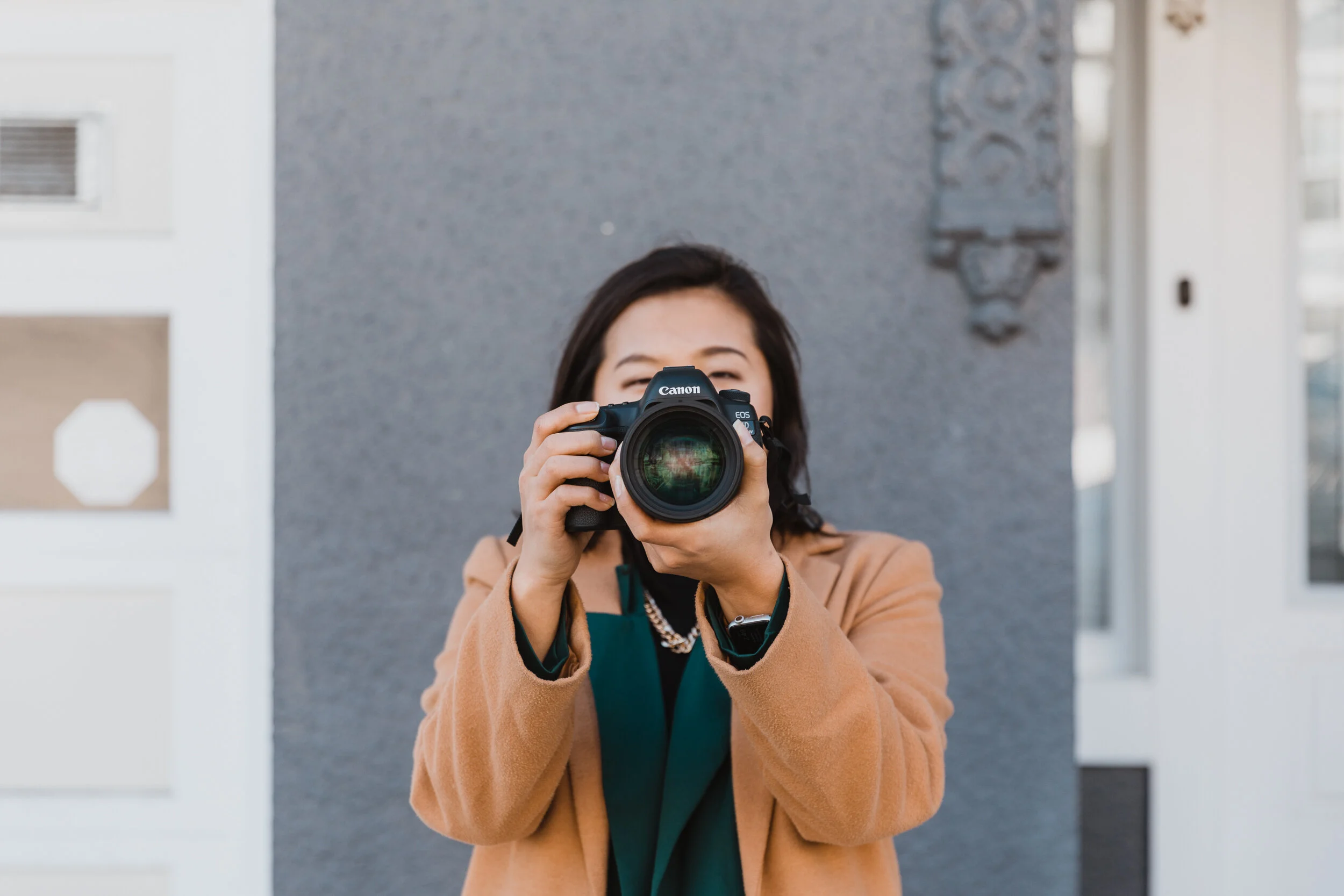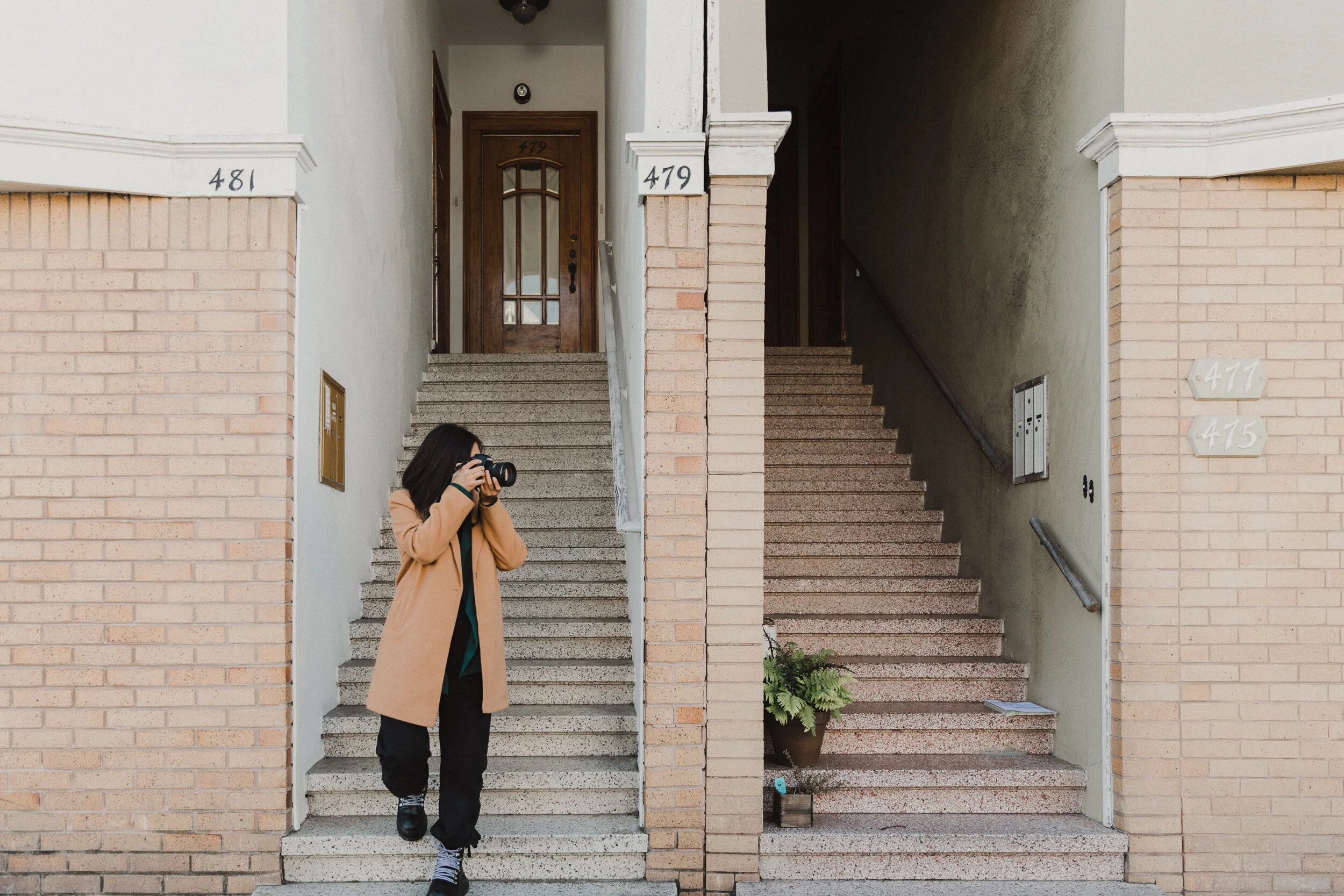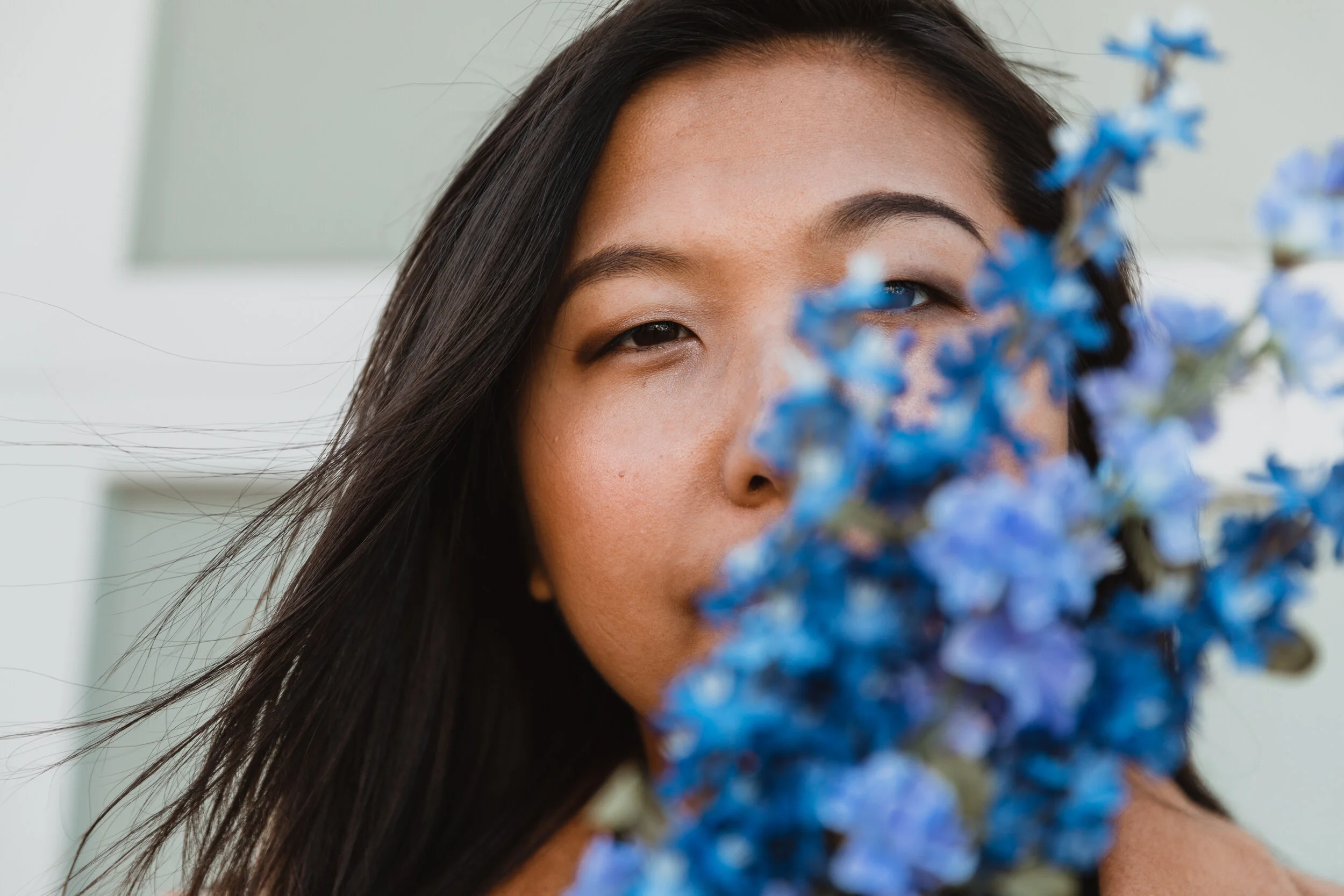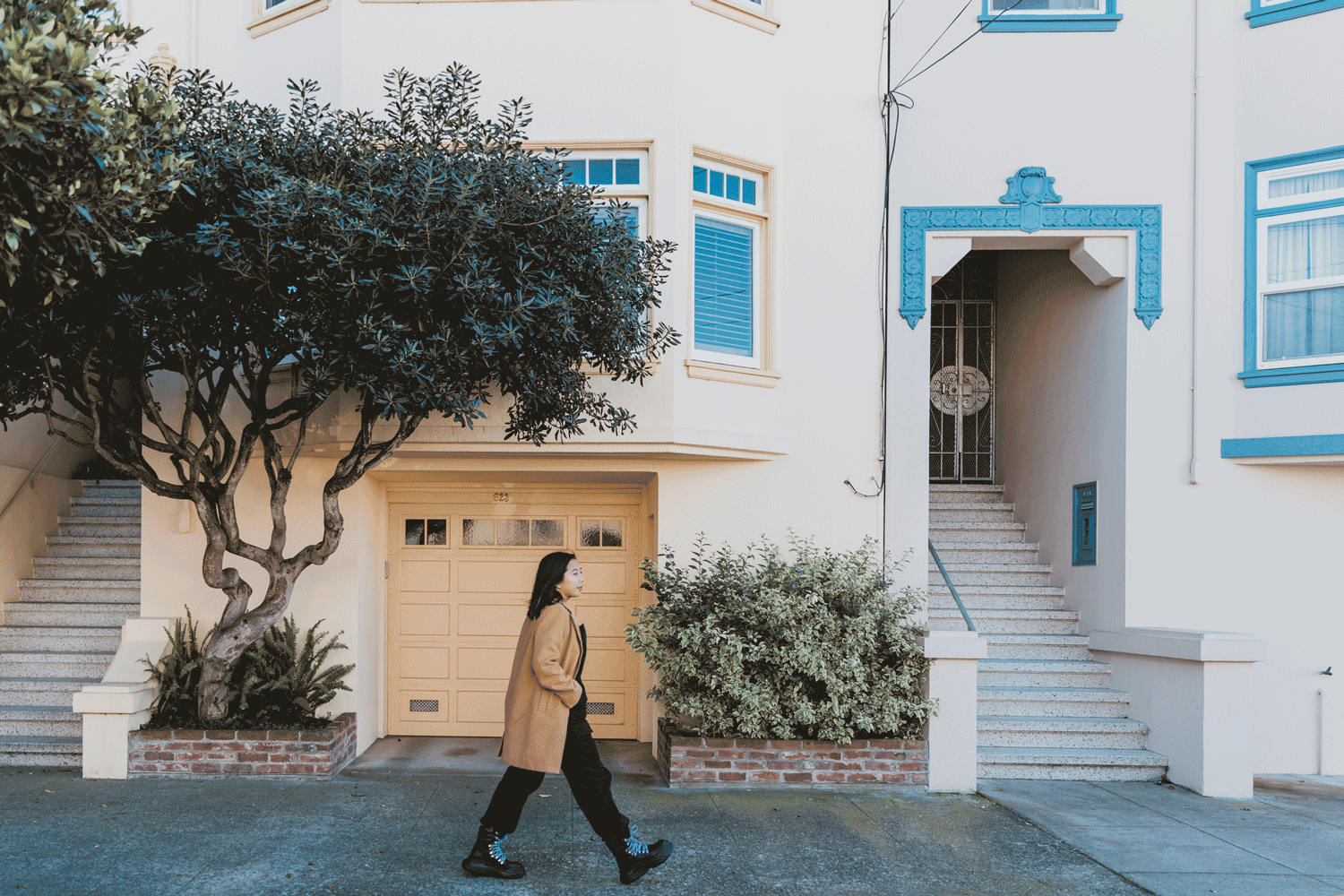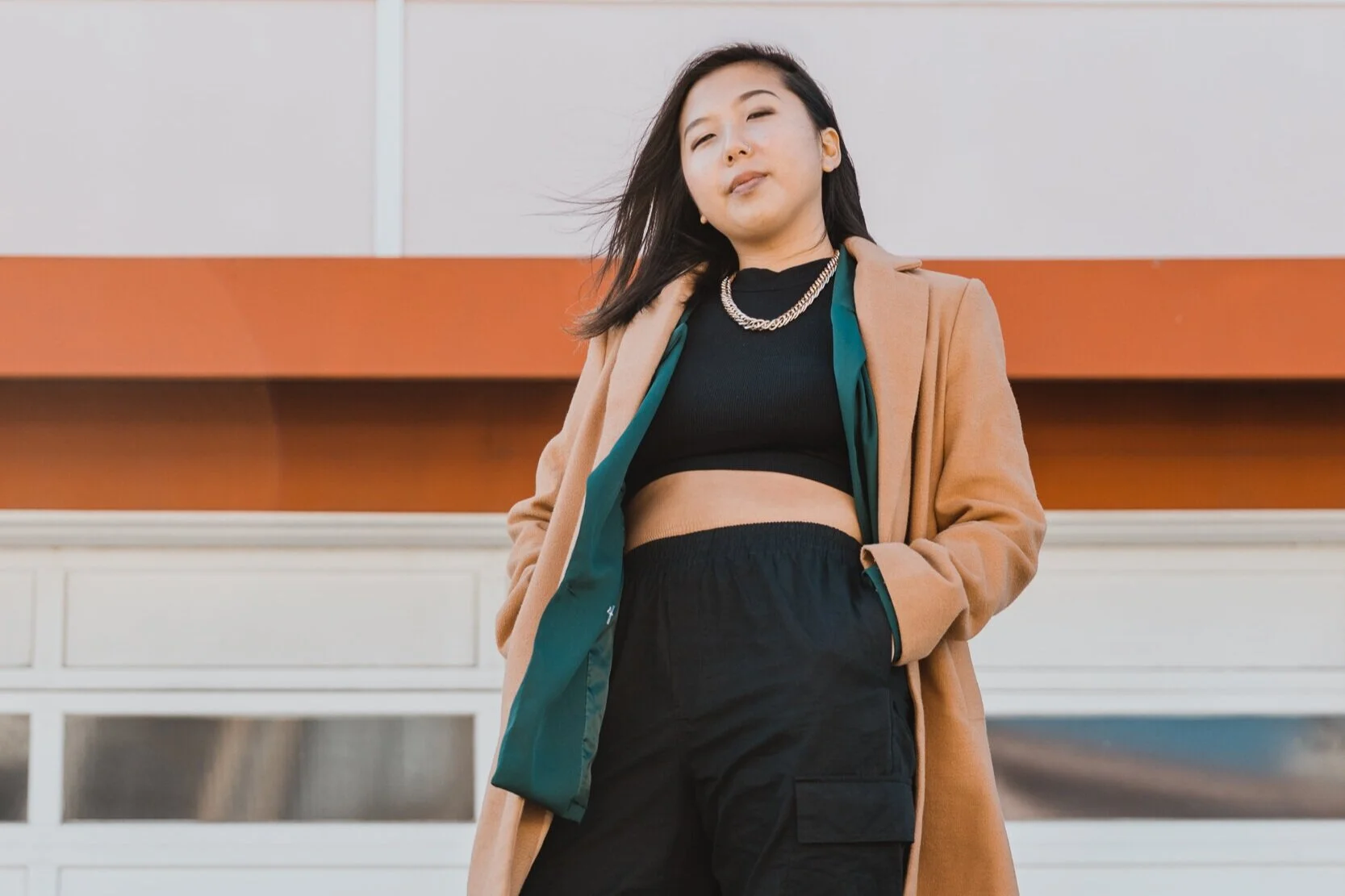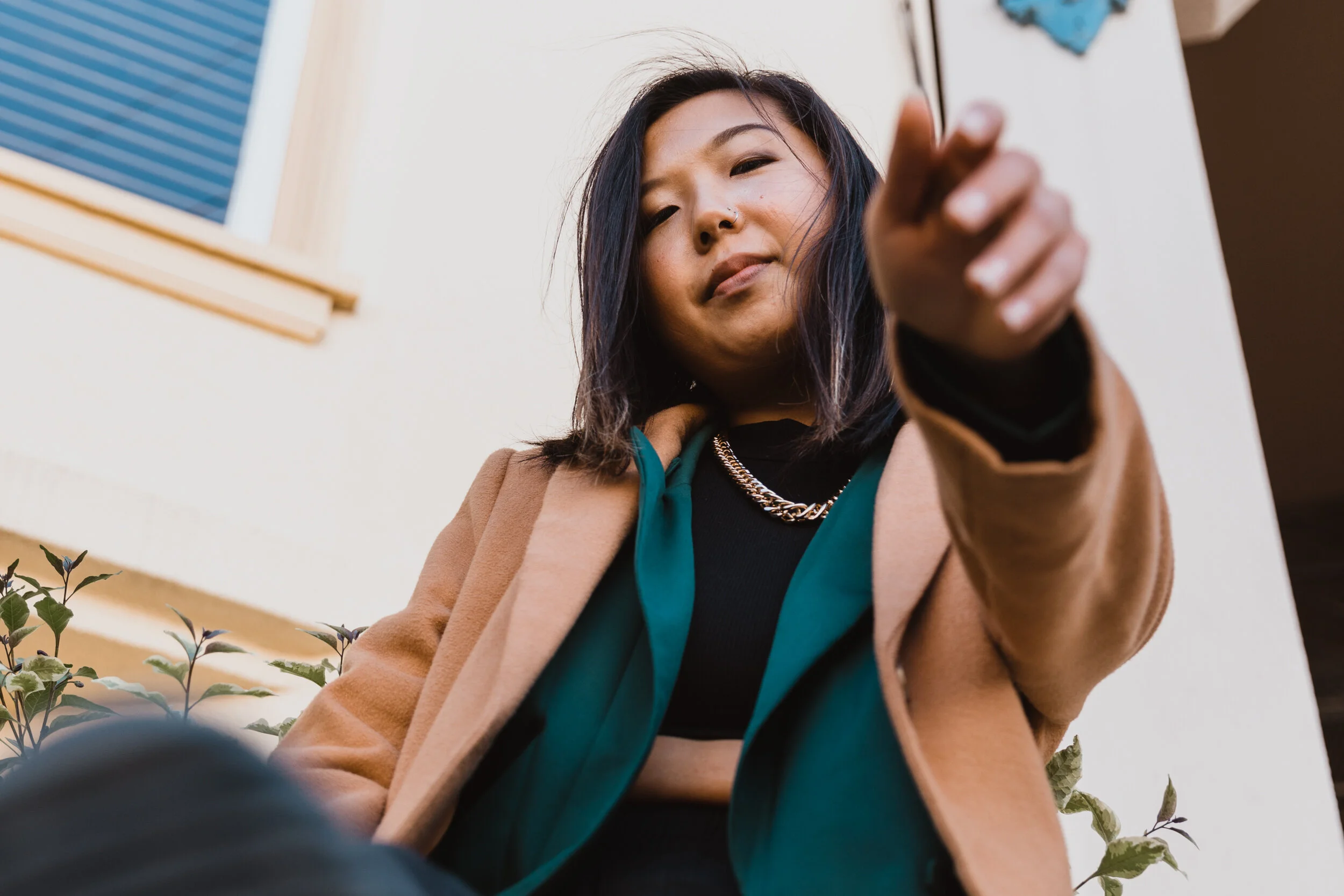The world through my creative lens.
recognizing privilege through life as a hmong and korean asian american
ANGELINA HONG
hmong and korean american
Having lived as a first generation multi-ethnic Asian American, Angelina recognizes the nuances of her own privilege. She has and has not, is and is not. She has grown up learning to recognize that self-actualization starts with acceptance. Each piece of her pulls together to create something beautiful. Because of what she has learned, both personally and through a deeper understanding of her Hmong and Korean historical roots, she has developed a profound sense of self. Angelina works to leverage her experiences and place in society so she can uplift others. Naturally, her culture and heritage deeply influence her art and art direction, and shape her goals as a creative. Now, she finds purpose through balancing her professional and creative endeavors with her cultural and personal identities.
Q: What do you feel is the biggest misconception about your cultural and Asian American identity?
A: Growing up both privileged and underprivileged is something I’ve had to dismantle through my journey of self-discovery. I’m a multi-ethnic Asian American with Hmong and Korean roots – a first generation daughter of a refugee Hmong mother and an immigrant Korean father. My background is a very unique mixture for a lot of people, because those cultures typically don't really interact. And though there are a lot of similarities, there are a lot of differences as well.
There’s this misconception where Koreans are perceived to be a bit more privileged, especially in the Asian diaspora, whereas Hmong people are not. A lot of people don’t even know where the Hmong ethnic group comes from. And if they do, they say, “Oh – Gran Torino!” And I say, “Okay, if that’s the only thing you know about us, let me tell you more.”
What a lot of people don’t know is that the Hmong population has one of the lowest high school graduation and literacy rates. The juxtaposition of expectations was interesting for me to have to play with: having a more privileged background with Korean roots and an underprivileged background with my Hmong roots.
I’ve had to grapple between both identities. Sometimes people see me as more Hmong or more Korean, but to me, I am Hmong and I am Korean. I fully embrace both, and I don’t like to give each a certain percentage. When you do, people get this idea that you’re only part of a whole. And I think they’re both wholly me.
—
Editor’s Note:
Clint Eastwood’s Gran Torino is the first mainstream American film to feature a largely Hmong American cast.
The 2000 US Census reveals that 60% of all Hmong above 24 years of age have the highest educational attainment of high school or equivalent, as many of these immigrants came to America as adults or young adults. About 7% of Hmong have a bachelor's degree or higher. According to government data collected in 2013, 40% of Hmong Americans drop out of school. Among the Hmong population, 38% have not received a high school degree, and 14% have at least a bachelor's degree. Educational attainment among Hmong women is significantly lower than among Hmong men, with about one in five Hmong women having a high school diploma.
“Sometimes people see me as more Hmong or more Korean, but to me, I am Hmong and I am Korean. I fully embrace both, and I don’t like to give each a certain percentage. When you do, people get this idea that you’re only part of a whole. And I think they’re both wholly me.”
Q: How did you come to understand privilege? What privileged experiences or lack thereof have you encountered growing up with a multicultural background?
A: Education is a privilege that stands out the most. I graduated from Stanford University in 2016. And to graduate from an institution like that, I know that no matter what happens, I’m in a privileged place. Even if I don’t make a lot of money in my professional life, education is a big privilege, even in this country. While I wasn't able to recognize the privileges at the time, I can see it now.
I can also understand the privilege of being an Asian woman able to fit in with a predominantly white community. If I'm walking down the street, I don't feel unsafe when I see a cop. And I know if I say something, people will take me at my word. I can walk into a room, hold myself high, and people will respect my presence. I’m aware that this is not true for everybody, even if they have a similar upbringing or education. Some individuals are perceived “too different” to blend in with the greater community.
I constantly wanted to question and check my privilege, because I'm so conscious of other people. I consider myself to be a very empathetic person and I wanted to recognize my place and purpose in a room.
During college, I also realized that I could study Asian American history and even studies focused specifically on race. Through that, I started to develop an interest in the subject and ended up finishing my undergrad with a minor in Comparative Studies in Race and Ethnicity.
Q: Where did you grow up, and what inspired you to learn more about your Asian American identity and ethnic backgrounds?
A: I grew up in a really white, suburban town in Minnesota. Being Asian and in a more low-income household made me feel “other than” and different. But instead of assimilating and fitting myself into a box, I celebrated those differences and chose to stick out from the rest of my peers, especially towards the end of high school.
My older sibling was definitely the catalyst for this change in thinking. They’re two years older than I am and went off to college two years before I did. Right in my high school senior year and in their sophomore year of college, they started becoming more racially and socially conscious. Because we're so close, I learned a lot from them. Those conversations with them turned on this light switch in my brain to reflect on a lot of decisions and biases I had in me.
Going to college at Stanford was when I was first surrounded by so many people of different races, ethnicities, nationalities, and backgrounds. People across the world were coming here. On the way to class you could hear people speaking different languages. I think that really opened my eyes to seeing how multicultural the world really was. The world was so much bigger than the one I grew up in.
—
Editor’s Note:
The Hmong — a distinct ethnic group with ancient roots in China—began coming to Minnesota in 1975 as refugees from the destructive wars that had ravaged their homelands in Laos. Today, there are more than 66,000 Hmong in Minnesota, and the Twin Cities metro is home to the largest concentration of Hmong in America (Minnesota Historical Society).
“Being Asian and in a more low-income household made me feel ‘other than’ and different. But instead of assimilating and fitting myself into a box, I celebrated those differences and chose to stick out from the rest of my peers, especially towards the end of high school.”
Q: What resources helped you learn more about the history of your multi-ethnic background, which in turn shaped how you recognize your identity today?
A: I think I learned about who I was and about my family history, not from school or my peers, but from my sibling and the books I read. There are not a lot of movies or documentaries about the Hmong or Korean experiences. And if there are, I haven't seen them.
Now, there is a lot of mainstream consumption of Korean culture, but it still doesn’t address our history or roots. I traveled to Korea last year for the first time and made it a point to learn more about the history and how everything came to be. Korea was under Japanese rule between 1910 and 1945, so within the last 50 or 60 years of the Japanese leaving, Korea has shaped into what it is now. It’s interesting to see this recent generation of the country completely change.
Understanding more about my Hmong side is a bit more challenging. There’s so much history to track down, and I’m still learning what the experiences of the displaced Hmong population looked like.
Q: Based on what you do know, can you give our readers a background of the Hmong people? Where are they now and how were they displaced?
A: Hmong people are definitely an Asian ethnic minority, and they don’t technically have a country. A lot reside in the Southeast Asian countries including Laos, Thailand, Vietnam, and China.
A large Hmong population immigrated to the United States after the Vietnam War. What happened was that the U.S. government was helping the Royal Lao Government fight against the North Vietnamese forces and destroy communist supply lines along the Ho Chi Minh Trail that ran through Laos and Cambodia, which is where many originated from. This is often called the Secret War in Laos because a lot of people don't know about this part of history. It's not in the United States’ textbooks, mainly because we lost.
When we lost, the U.S. abandoned and displaced the Hmong people who were helping fight in the war, even though they were promised protection. The communists were killing the Hmong people, who were left to fend for themselves. Luckily, there were some refugee camps, but it was a trek and a travel for people to get access. And if you were caught by the communists in that trek and travel, you were killed. As a result, a lot of the Hmong population migrated to the United States with nothing. Many made up names and birthdates to receive citizenship.
It’s interesting to hear about that side of my history. My mom and her family grew up in the projects and the slums of the U.S., and hearing about how they had to survive through the winters in Minnesota was a very humbling experience.
Since then, my family has been a little bit more privileged in the way we've been accustomed to America. If you talk to my aunts or uncles who are all refugee immigrants, you probably wouldn't be able to tell. They speak English fluently and work typical 9-5 jobs. You almost wouldn’t know that 30-something years ago they migrated here. But that's not the case for every single Hmong family.
I was blessed that my family got really lucky in that regard. That luck transferred to my ability to go to a good high school and get a good education. I was accepted to Stanford, and from there I was able to build my life into what it is today.
Q: How do your experiences shape where you are now in your professional career?
A: I have gone through an interesting transition as an Asian American creative. My family gave up on the idea that I was going to be a doctor or a lawyer once I decided to study public and community health, but they were never not supportive of my decisions. I don't have the narrative that many other Asian Americans do with having “Tiger Parents.” They let me make my own decisions. They trusted me and thankfully, I ended up doing good things for myself.
Obviously, there’s this self doubt and worry of mine that the creative industry is the less conventional and less safe route. So I know that my family worries about me. It’s not that they want me to do something else, they just mean, “Oh, I don't want you to be poor like I was.” That definitely scares me, too, because financial instability is a big fear of mine. It comes from learning of my mom’s experience and going through that struggle myself.
Now I'm at a point in my life where I can play with my fears a little bit and push the boundaries. And that has a lot to do with my privilege – I know that. Because if I needed a backup plan to secure another job, I know that I probably could.
I also know that being able to tell my story comes with a lot of privilege itself. I'm able to set aside time to consider these different career alternatives, rather than only thinking about where my next paycheck or meal is going to come from. So, I'm excited to be embarking on my full-time freelancing journey as a brand photographer and social media strategist.
“Being able to tell my story comes with a lot of privilege itself. I'm able to set aside time to consider these different career alternatives, rather than only thinking about where my next paycheck or meal is going to come from. So, I'm excited to be embarking on my full-time freelancing journey as a brand photographer and social media strategist.”
Q: Will your work as a creative take inspiration from what you know now about both your privilege and experiences as a multi-ethnic Asian American?
A: I recognize that a lot of my culture and heritage is starting to infiltrate my art. I think the phrase, “The personal is political,” is so accurate. My own experiences and tribulations inform my day-to-day actions and my work. I’m passionate about helping women entrepreneurs and the LGBTQ community because those are my people. I know how hard it is to start and run your own business, especially as a woman of color or as a queer person. There are minimal resources that are made by us, for us. So I think it’s vitally important for me to leverage my knowledge, privilege, and power toward uplifting these people.
I’m excited to see where it goes and it’s humbling to finally mesh these two worlds together, my professional and my creative life. My work will not only support women and LGBTQ entrepreneurs, it will also subvert beauty standards. By allowing these people to feel beautiful, to be captured, and to be consumed by people and media is so powerful.
Q: Thank you for walking us through not only your experiences as an Asian American, but how you learned what it means to be connected to two vastly different cultures. Why do you think it’s important for others to acknowledge our cultural identities outside of being just “Asian American”?
A: Recognizing our individuality, realizing that we're all a little bit different, and not relying on this group identity as “Asian Americans,” is important. We’re much more complex than what people believe. There’s an incredible number of ethnic Asian groups, and with that, complex history in each. It’s important to acknowledge that.
Acknowledging our collective yet individual Asian American histories will help us better understand ourselves and each other. We need to teach other people that these histories exist, and ultimately pass our knowledge on to future generations – because no one else will. It’s important to keep that alive.
“Acknowledging our collective yet individual Asian American histories will help us better understand ourselves and each other. We need to teach other people that these histories exist, and ultimately pass our knowledge on to future generations – because no one else will. It’s important to keep that alive.”
CONNECT WITH ANGELINA
Instagram / Facebook (Business) / Facebook (Personal) / Website
MORE THAN ASIAN CREATIVE TEAM
MTA Creative Direction: Alex Hallmark
MTA Art Direction: Lawrence Ricardo
Shoot Concept and Lead Photographer: Kelly Luu
Lead Editor: Jay Mehta
Contributing Editor: Lauren Funaro

